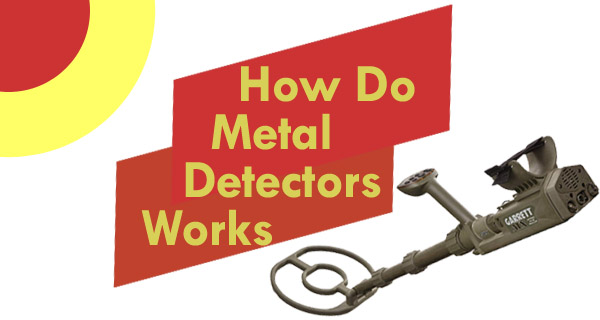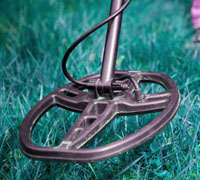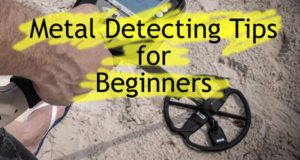We all love treasure hunting, don’t we? The joy of finding a valuable relic is immense. The sound from our beloved metal detector is what everyone waits for eagerly. If you are wondering how do metal detector work? You come to the right place.
Here is the step-by-step working principle of a metal detector. The technology of metal detector is same as that of a military services use that is electromagnetism.
In a simple and easy to understand steps, here is how the metal detectors actually work:
- The battery at the top of the detector is responsible for activating the transmitter. Now this transmitter sends current signals via a cable running through the handle. This current reaches the transmitter coil at the bottom.
- The flow of electric current through the coil creates a magnetic field.
- If our metal detector is swept across a metal object, the magnetic field will penetrate through the object.
- An electric current is made to flow inside the metal object by the magnetic field.
- Another magnetic field is created around the metal object. This magnetic field will make current flow through the receiver coil and up into the receiver circuit. Thus the loudspeaker will get triggered and will alert us if it finds something.
Overall this is how metal detectors works in general, below is the longer and more detail version of each and every key part of metal detector that take part in overall working of metal detectors:
Key Parts Involved in Working of Metal Detector
Visual Identification:
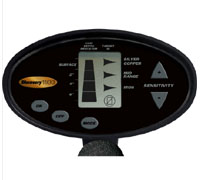 The Visual ID in the metal detectors helps to aid in target identification. The Visual ID meter may feature a needle or an LCD and help the person meet the buried relic with precision and accuracy. This usually helps the person to make sure whether he needs to dig deep or just at a moderate level.
The Visual ID in the metal detectors helps to aid in target identification. The Visual ID meter may feature a needle or an LCD and help the person meet the buried relic with precision and accuracy. This usually helps the person to make sure whether he needs to dig deep or just at a moderate level.
Usually, a color 3D representation of the image is shown. The image sensors help the user to identify the depth, type of object and dimensions of the metal buried. The detectors which do not facilitate the imaging feature will only provide limited Intel on the aspects of the buried metal.
Water Resistance
 Metal detectors which are waterproof will allow your bounty hunting to be taken to the next level i.e underwater. Underwater metal detectors will not sound off an alarm when a metal is detected as it not audible underwater.
Metal detectors which are waterproof will allow your bounty hunting to be taken to the next level i.e underwater. Underwater metal detectors will not sound off an alarm when a metal is detected as it not audible underwater.
Hence they show the indication via a needle. The waterproof metal detectors will also be lighter and costlier. Waterproof detectors are very important for people living near coastal areas and other water bodies. If you like detecting in water bodies then you ought to have water resistance feature.
The waterproof metal detectors come in two kinds which use 2 different technologies:
- Pulse induction Metal detectors
- Very Low Frequency metal detectors
Your style of treasure hunting determines the design that you would choose.
Transmission of quick electronic pulses to the ground is what Pulse induction Metal detectors do. The electronic currents are only sensitive to precious metals and are not affected by the salt water or ground minerals. If you are looking for treasure in salt water beaches and grounds, then this design is what you should be looking for.
VLF detectors on the other hand, operate in the 3 to 30 KHz frequency range. They are also highly sensitive to coins and relics. A merit about this design is that it can sort out between junk items and valuable ones. On the other hand, it is affected by ground mineralization. That would be a drawback for use in salt waters.
Battery
 A normal metal detector uses a normal battery for its requirements. The battery may be charged daily or weekly depending on the usage of the detector. You can buy rechargeable batteries or alkaline batteries; the bottom line is that rechargeable batteries are better in the long run.
A normal metal detector uses a normal battery for its requirements. The battery may be charged daily or weekly depending on the usage of the detector. You can buy rechargeable batteries or alkaline batteries; the bottom line is that rechargeable batteries are better in the long run.
The transmitter circuit is activated by the battery at the top which allows the flow of electricity down the cable in the handle to the transmitter coil. The transmitter coil is located at the bottom. You can always carry extra alkaline batteries in case you are going on a trip. You might not find power source everywhere.
Coil Size
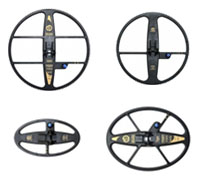 All the detectors come with varying coil sizes. Each coil size has different impacts on the hunting results. For picking out good items from junk materials a small coil does the trick. The standard 8 inch coil size is the most popular one. It is an all-rounder and performs well under most of the situations.
All the detectors come with varying coil sizes. Each coil size has different impacts on the hunting results. For picking out good items from junk materials a small coil does the trick. The standard 8 inch coil size is the most popular one. It is an all-rounder and performs well under most of the situations.
For low trash and low mineralization areas, the larger coils are recommended more. The depth penetration and ground coverage are increased when we use a large coil.
The drawback regarding this size is that it will be heavier and many users will feel more comfortable with the small size coil. For the wide variety of conditions that you will be encountering, varying coil sizes will help you in that perspective that you can pretty much adapt to different surroundings.
A metal detector that is ground balanced will perform much better. It will also give more details regarding the target underneath. The process of cancelling out the mineralization is known as ground balancing and it will only allow the detector to read signals from the new target.
The proper balance between the grounds is what is aimed with ground balancing. A balance between the positive setting and negative setting is recommended for proper analysis of the target. The three different types of ground balancing are manual balance, preset balance and auto balance. If you master the manual balance, you can get the most out of your detector in any conditions.
Headphones
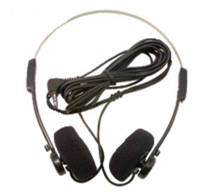 The headphones can largely reduce outside noise. The enhancement of the audio signals from the target is also done so as to allow us to dig properly. The better your headphones are, the faster you’re digging time and better your finds will be.
The headphones can largely reduce outside noise. The enhancement of the audio signals from the target is also done so as to allow us to dig properly. The better your headphones are, the faster you’re digging time and better your finds will be.
Headphones largely cut off external disturbances, increase the battery life of your detector and also can keep you away from onlooker’s attention. Serious metal detectors ought to have headphones as they will greatly increase your success rate.
